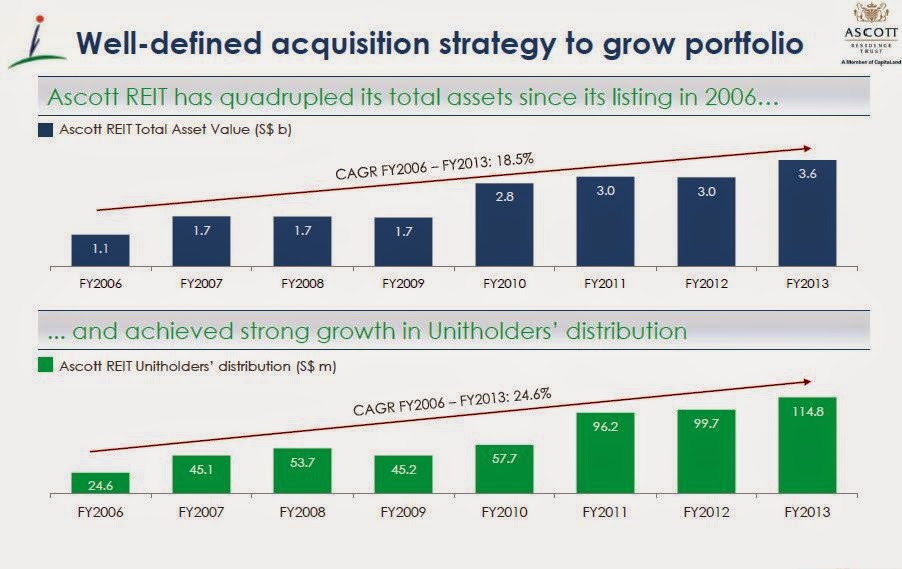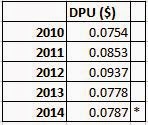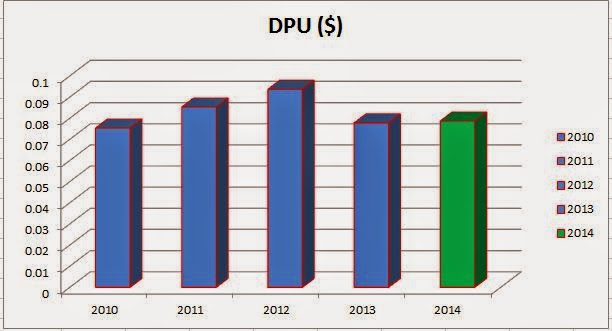I am vested with 15 lots of Ascott Reits since my last participation in their Rights Issue which they raised back in Nov 2013. If you are interested, you can view them here and here. Before that in Jan 2013, they have raised another private placement which you can view them here.
I don’t have a crystal ball, but I am going to make a bold prediction regarding the Reit.
Every investor of Ascott Reit should know the management objective which they have highlighted several times in the past years. They are on a sprint global expansion to have operational 80,000 units by 2020. Yesterday, there is an article (here) that further emphasized on this goal.
In the article, Lee Chee Koon, Ascott’s CEO, said:
“In 2015, there will be no let-up in our expansion. We will continue our global expansion, with a target to open more than 20 properties this year. These will be in China, India, Indonesia, Korea, Malaysia, Phillipines, Vietnam, Oman and Saudi Arabia. We are on track to achieve our target of 40,000 apartment units worldwide by end this year and aim to have 80,000 units by 2020.”
The thing I like and don’t like about Ascott Reit is on one hand they are well on track expanding their asset cap, which is a good thing but on the other hand they are “forcing” investors to subscribe to the rights issue or placement, and you have no choice but to subscribe if you do not want to be diluted. Some investors think it is fine if the asset acqusition they make is accretive, but little do they consider the impact of Theoretical ex-rights price (TERP) which I would talk about in more detail later. This is management’s financial fund engineering at its very best. Push up the price, then do rights issue, leaving investors with little choice to decide.
Just take a look at the investor presentation below which they have highlighted to the investors back in Oct 2014. All you see is how they have emphasized their CAGR have grown for their total asset base and total unitholder’s distribution, without any mentioning of the distribution per unit. For those who bothers to actually calculate the DPU year on year, it actually looks like the one I presented below. The reason for this is of course pretty clear. DPU has not been increasing on an uptrend as they usually raise a substantial discount to the rights issue to participate with huge additional units that brings down the yield. If there is one thing I’ve learnt from my previous work stint at a Reit company, it is that anything that is not favorable do not show it to the investors. DPU, in this case, happens to be the one and most sensitive to investors’ sentiment, so hide them well.
In my mind, their strategy is like this:
Buy assets -> Increasing Total Distributions (not DPU) -> Push up price -> Gearing cap at around 40% -> Raise rights issue/placement -> Buy assets and repeat.

 |
| DPU Table *FY14 Annualized |
 |
| DPU Trend over the past 5 years |
Theoretically, there is nothing extremely wrong with this move since DPU is not extremely compromised and investors are still getting around 6.6% to 7% yield. But on the other hand, we have a situation where value is not created. Note that I did not mention that value is destroyed but value is just not created.
For example, the last rights issue raised was for a 5-for-1 at an issue price of $1. This was at an extremely huge discount to the last closing price of $1.29 before the announcement. The next day after the announcement, the share price drops massively to around $1.21. However, that is not the point I want to make.
The Theoretical ex-rights price (TERP) has actually went to $1.24 after the rights, which means that it is a huge drop from the then current price at $1.29. That is certainly not value creating at all, even if you fully participate in your rights. For those who are curious how to calculate the TERP, you can use the following formula below:

Final Thoughts
Ascott’s Gearing is currently close to 40% and the last time they issue rights and placement before that was when gearing was at 41%. Given their aggresive expansion plan for this year, there is no doubt that rights or placement will soon be on the cards. My suspect is after the full year announcement in Mar/Apr.
As an investor, you should at least prepare some funds to participate in the rights if you do not wish to be diluted. The alternative is to sell the rights or sell the shares altogether. Selling them before the announcement will probably save you a couple more percentage points as I believe they will similarly issue rights that makes the TERP goes down after that.
Again, I wish to highlight that this move by Ascott is financial engineering at its best. They are certainly not value destroying to the shareholders, but they are not value creating as well. They grow their asset base steadily and gets the best part of the pie while as investors your DPU remains rather stagnant at that stage.
Now, we’ll just wait if the crystal ball prediction is right.
What do you think of this engineering exercise done by Ascott’s management?


Hi B,
So in essence, it's like putting more money into a vehicle that gives you the same % returns. Involuntarily.
I guess that's neither good nor bad. It'll be bad if you don't have the means to participate in rights then, as you've mentioned.
Hi LP
Exactly the point.
It's not that it's a bad thing, it's just not value creating for you as investors.
We need to re-look back at our motive for investing in the Reits, just for the dividend or we want growing business? Of course, there are Reits that are offering them both.
Hi B,
I am monitoring this REIT too for potential investment. Thanks for the clear write-up.
The aggressive expansion is a concern I have. In their 2013 Annual Report, I note that the land lease on two of their French properties are up. Wrote to their IR for the outcome, but no reply yet.
Agreed on the view that a S-Reit holder should always be prepared for right issues. Otherwise, one will simply lose out if the Manager come crying for more money.
Hi SRSI
The aggressive expansion is their push story, but as a retail investors, it doesn't benefit us in the form of growing DPU over time. It's not that bad, but it's definitely not a growing Reits for investors.
Hi B,
Can you elaborate more about what value creating is? From what I know, rights issue at a discount of the current price would always result in the TERP falling below the then current price. So what is the issue here? Sorry if it's a noob question, I'm still learning ;(
W.K
Hi W.K
You are certainly not a newbie here to have asked such question. I thought it's a very well question.
Maybe I should make it more clearer. Yes you are right, the TERP would fall below the current price whenever the rights is issued at a discount, but I think the 5-for-1 at $1 was a big too much, plus in addition to the fact that DPU does not even grow, only asset does.
The recent MAS consultation paper to realign management incentive might help to mitigate this kind of issue we are seeing in Ascott, where management are too focused on growing their asset base without really improving the DPU for shareholders.